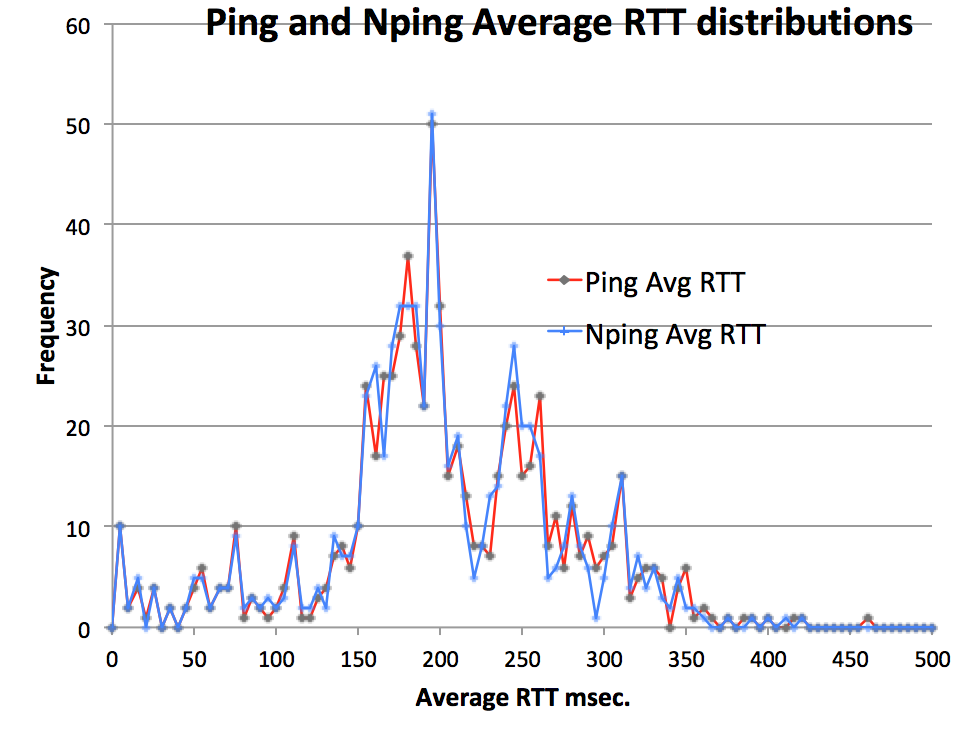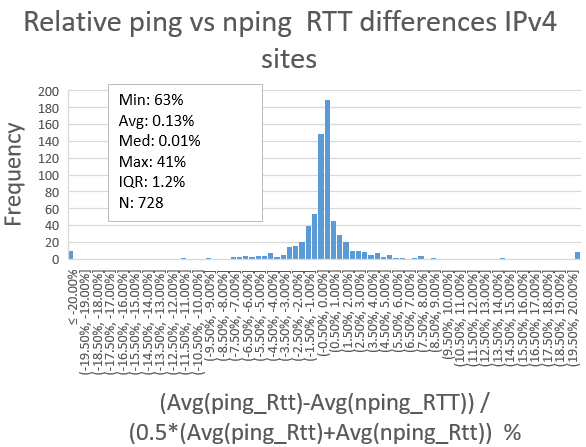...
For the IPv4 data measurements using the list of PingER hosts, the script ran for about 6 hours and 45 minutes. The distribution histograms shown below show that the agreement between ping and nping average RTT is good:
PIngER targets:
...
There are 728 PingER hosts responding to both ping and nping on port 80 (there are about 270 responding to port 22), 50% have Average(RTTs) for ping and nping within 2.15ms of one another. The hosts are in 160 different countries with China having the most hosts with 195, followed by the United States with 52, Indonesia with 37, Malaysia with 27 and Pakistan with 13. In terms of regions the top region is East Asia with 206 hosts, 101 from Africa, 63 from Europe and 58 from North America (Canada and the United States). There are 593 host that have 'www' in the name. The range of average ping RTTs is from 0.327ms to 377ms. The range of nping RTTs is from 2.3ms to 387ms.
The Frequency histograms of average ping and average nping RTTS are shown below (Excel spreadsheet is here)
It is seen that there is little difference in the two distributions. We thus compare the Cumulative Distribution Frequencies (CDF) by plotting their differences, note this is a step towards using the Kolmogorov–Smirnov (K-S) nonparametric test of the equality of continuous, one-dimensional probability distributions and yields a maximum difference (supremum) of 3.18% at 255 msec. K-S indicates that the probability of rejecting the null hypothesis (the null hypothesis says there is no relationship between the two measured phenomena) is very high.
To exemplify the differences in the RTTs measured by ping and nping we show the frequency distribution of the differences in the two Average RTTs. The histogram of the differences in the ping and nping averages RTTs is shown below.
Another way of looking at the data is to consider the relative differences, i.e. (Avg(ping_RTT)-Avg(nping_RTT)/(0.5(Avg(ping_rtt)+Avg(nping_RTT)), this gives the distribution below that shows the IQR of the averge difference is ~ 1.2%. If one looks at the hosts that have relative differences of > 22% or less than -22% (about 2% of the hosts), we find most are from China or have low RTTs (< 4 msec).
perfSONAR targets
There 786 perfSONAR target hosts that respond to both ping and nping IPv4 measurements.
IPv6 measurements
PingER hosts seen from SLAC MA
...






